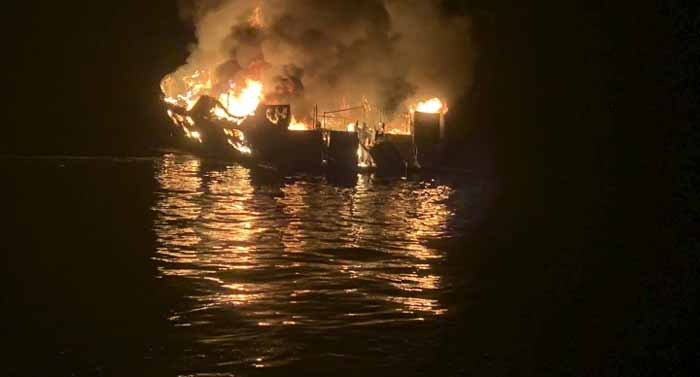
Truth Aquatics Inc., which owned the Conception, filed the action in U.S. District Court in Los Angeles under a pre-Civil War provision of maritime law that allows it to limit its liability.
Investigators are still searching for what caused the blaze that wrecked the boat, which remains upside down at the bottom of the sea near the Channel Islands.
The time-tested legal maneuver has been successfully employed by owners of the Titanic and countless other crafts — some as small as Jet Skis — and was widely anticipated by maritime law experts. Still, the fact it was filed just three days after the deadly inferno Monday came as a surprise to legal observers.
Families of the deceased, who are not named in the complaint, will be served with notice that they have a limited time to challenge the company’s effort to clear itself of negligence or limit its liability to the value of the remains of the boat, which is a total loss.
“They’re forcing these people to bring their claims and bring them now,” said attorney Charles Naylor, who represents victims in maritime law cases. “They have six months to do this. They could let these people bury their kids. This is shocking.”
Professor Martin J. Davies, the maritime law director at Tulane University, said the cases always follow accidents at sea and always look bad, but they are usually initiated by insurance companies to limit losses.
“It seems like a pretty heartless thing to do, but that’s what always happens. They’re just protecting their position,” Davies said. “It produces very unpleasant results in dramatic cases like this one. … The optics are awful.”
The U.S. law dates to 1851, but it has its origins in 18th century England, Davies said. It was designed to encourage the shipping business. Every country with a shipping industry has something similar on the books.
In order to prevail, the company and owners Glen and Dana Fritzler have to show they were not at fault in the disaster.






